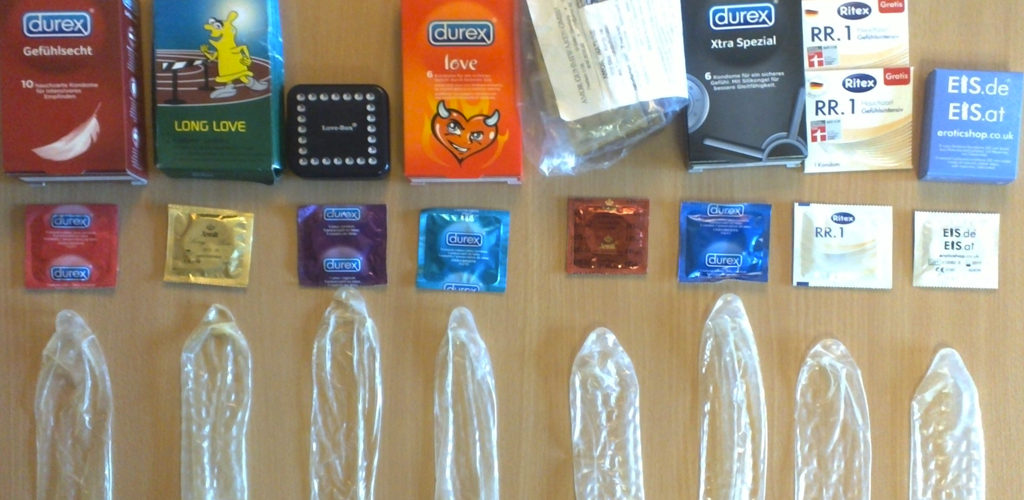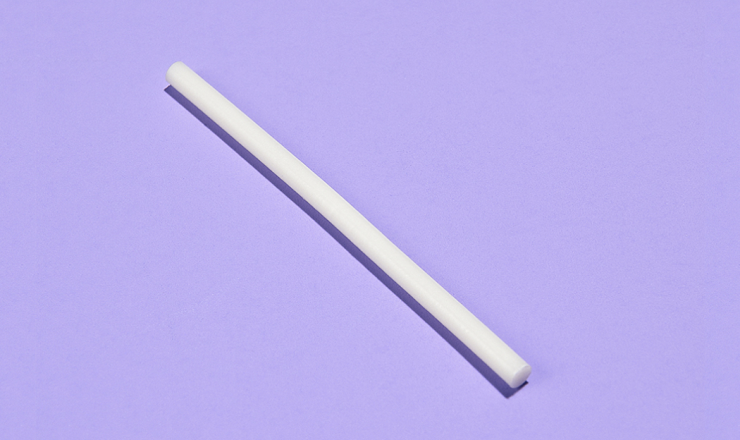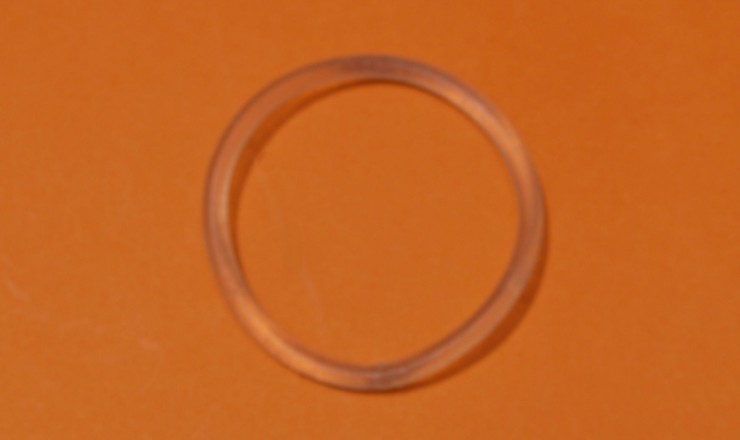External Condom
What is the external (male*) condom?
- An external condom is a thin covering, usually made of latex rubber, that is worn over an erect (hard) penis** or sex toy during oral, vaginal** or anal sex.
- The external condom prevents both unplanned pregnancy and sexually transmitted infections (STIs).
- Non-latex condoms made out of polyurethane, tactylon and polyisoprene are available for people who are sensitive to latex.
- Lambskin condoms only protect against pregnancy, not STIs.
How does the external condom prevent pregnancy and STIs?
- In order to get pregnant, sperm must enter your vagina*, swim into your uterus and fertilize an egg that has been released from the ovaries during ovulation. The condom prevents semen (cum) that contains sperm from getting inside and reaching an egg.
- In order to pass on most STIs, bodily fluids (anal fluids, vaginal fluids, semen or blood) from someone who has an STI must come into contact with someone else’s mucus membranes (inside the penis, mouth, anus, or vagina) The condom prevents bodily fluids from coming into contact with mucus membranes.
How effective is the external condom?
- Latex external condoms are 97% effective at preventing pregnancy. This means that if 100 people use condoms correctly for one year, only 3 people will get pregnant.
- Spermicide-coated condoms have the same level of effectiveness.
- Because condoms may be used incorrectly, they are closer to 86% effective at preventing pregnancy with typical use.
- Condoms offer excellent protection against most STIs, but are less effective in preventing STIs that are spread from genital skin-to-skin contact like herpes or HPV because condoms may not cover all of the affected areas.
How do you use the external condom?
Pinch. Place. Unroll.
- For a visual guide on putting on an external condom, check out our How-To page [Link].
- External condoms can be used on sex toys or on an erect penis. They should be put on before the toy or penis comes into contact with someone else’s body.
- Do not put more than one condom on at a time.
- Condoms should be stored in a cool, dry place away from direct sunlight. Your pocket or wallet is not ideal storage.
- Before you use a condom, check the expiry date and press on the condom wrapper to make sure there is still air inside. This means the package hasn’t been damaged.
- Squeeze the condom to one side and open the package. Do not touch it with your nails or teeth, which could tear it.
- Before you put the condom on your penis, consider adding a drop of water-based or silicone-based lube inside the condom’s tip to reduce friction and increase pleasure. This can be especially helpful for people with foreskin.
- Pinch the tip of the condom and place it on the head (top) of your penis or sex toy. This squeezes out any remaining air. Pulling the condom tight over the head of your penis can make it more likely to break.
- Using your other hand, unroll the condom all the way down to the base of the penis or toy. If you have difficulty unrolling the condom it is likely inside out – throw that condom away and start again with a new one.
- If you are putting a condom on a penis with foreskin, try rolling the foreskin back or all the way forward before rolling the condom down the penis. You may find condoms with more room at the top are more comfortable.
- Once the condom is on, you can add more lube to the outside of the condom or to the vagina or anus for added pleasure.
- Make sure that your lube is water-based. Oil-based products like Vaseline, baby oil, vegetable oil, whipped cream or hand cream can damage condoms.
- During sex, check periodically to ensure the condom is still on the penis or toy and hasn’t come off inside the other person.
- After anal or vaginal sex, the person wearing the condom should wrap their hand around the base of the condom when pulling out their penis. This prevents semen from spilling.
- Use a new condom for every act of sex. Do not reuse condoms. Put a new condom on before using a sex toy on someone else and before switching from anal to vaginal sex.
How to start using the external condom
- Anyone can purchase a condom from pharmacies, convenience stores and some public washrooms (approximately $1/condom). You can often get them for free at schools, community centres and clinics like PPT’s Health Services. You do not need a prescription to use condoms.
- Try putting a condom on yourself (or a dildo or banana) when you are on your own to get some practice. Find the type(s) of condoms that work for you. The more familiar you are with safer sex tools, the easier it will be to use them.
- Try masturbating with a condom on your penis to train your brain to associate pleasure and orgasm with a condom.
What are the side effects of the external condom?
- If you are allergic to latex, you can buy non-latex condoms at pharmacies, sex stores or online. Some sexual health clinics may have them for free.
- Some people report decreased sensitivity or difficulty staying erect when using condoms. Add lube to the inside tip of the condom, masturbate wearing a condom, have fun trying different types of condoms, have a partner put the condom on you or talk sexy while your partner puts a condom on themselves.
Advantages of the external condom
- Condoms (external and internal) are the only birth control method that also reduce your risk of getting STIs.
- You only have to use this method when you have sex.
- There are no hormonal side effects. People who can’t or do not want to take hormonal birth control can use this method.
- They don’t affect your ability to get pregnant in the future.
- You don’t need a prescription to buy them.
Disadvantages of the external condom
- You have to do something before you have sex. Try to make putting on a condom a fun and sexy part of foreplay.
- A penis must be fully erect to put a condom on it. If you lose your erection, use a new condom.
- Using condoms without enough lubrication may make condoms feel uncomfortable and make them more likely to break. Try adding lube to the outside of a condom once it is on or adding lube to the vagina or anus.
- If you or your partner has a latex allergy, non-latex condoms can be expensive.
- The person who wears the condom has to agree to use one. If they don’t want to put on the condom, you can offer to do it for them. If you have difficulty negotiating condom use with your partner(s), please see the page “Talking About Safer Sex.”
Download Teen Health Source’s guide on how to use external condoms: How To: External Condoms
For a downloadable resource on this topic, please visit Planned Parenthood Toronto Factsheet Database.
If you have questions about this topic, feel free to contact one of our peer educators. [Link]
*External condoms are often called male condoms, so we have included this in brackets. People with penises don’t always identify as male and external condoms are used by people of all genders.
**We know that these aren’t the words everyone uses for their bodies (eg. trans folks), and support you using the language that feels best for you.
Last Edited: May 2020






